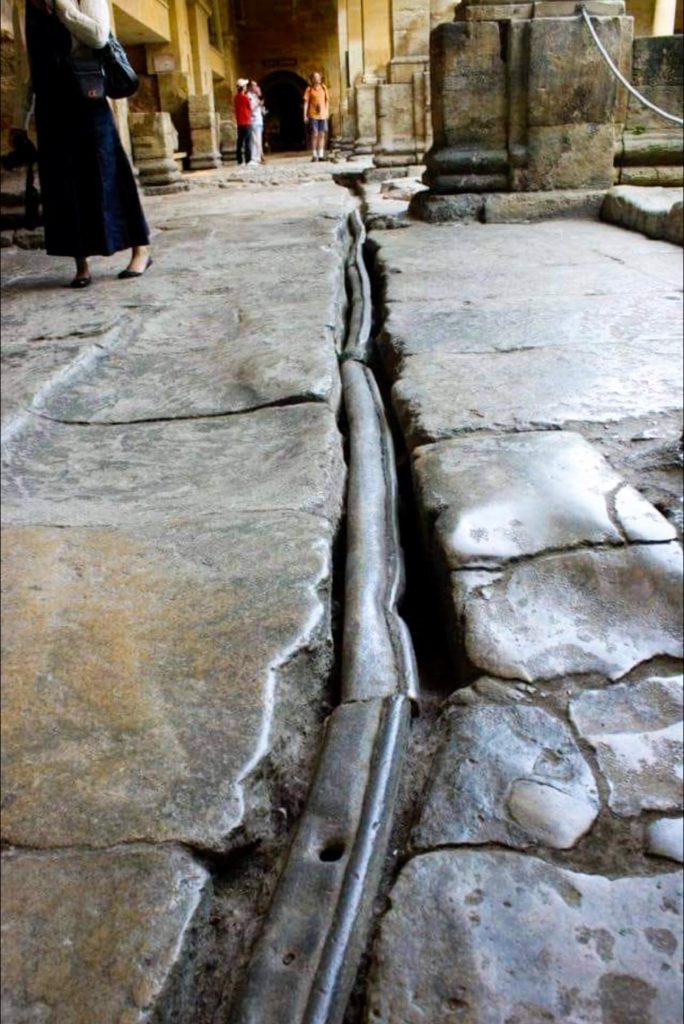In the heart of England, nestled amid green hills and centuries-old streets, stands the city of Bath—a place where history doesn’t just surround you; it runs beneath your feet. With every step through its charming avenues, you’re treading over layers of civilization. Few places in the world can boast such an intimate connection with the ancient past, and fewer still can claim to operate on the very systems once designed by the minds of the Roman Empire. Beneath Bath’s surface lies an extraordinary tale—one that begins nearly two thousand years ago with the vision and engineering prowess of Roman builders who saw not just a landscape, but an opportunity to build something enduring.

When Roman engineers arrived in what is now Bath, they encountered a region rich with natural hot springs—warm, mineral-infused waters that surged from the earth, as if offered by nature itself. But instead of simply marveling at these springs, the Romans saw them as a resource, a centerpiece around which to build an advanced and elegant system. These were not ordinary builders. Trained in the discipline of architecture, engineering, and hydrology, Roman engineers were some of the most skilled minds of the ancient world. What they envisioned in Bath was not just a way to manage water—it was an entire cultural, social, and technological ecosystem centered on water as a sacred and communal force.
At the heart of this remarkable endeavor was the creation of a sophisticated aqueduct and piping system. Spanning over six miles, the aqueducts funneled mineral-rich waters from distant springs into the city. These waters fed a series of public and private bathhouses, communal areas, and residential spaces. What made this system so unique wasn’t just the scale or reach—it was the precision and innovation behind its materials and design. The Romans constructed a network of lead pipes—cylindrical tubes made by expertly rolling and sealing sheets of lead. These pipes were more than functional; they were masterpieces of ancient craftsmanship. Many of them were alloyed with tin to improve durability and reduce the harmful effects of lead exposure—a detail that reveals the Romans’ deep understanding of materials science.
Despite modern knowledge about the dangers of lead, these ancient pipes stand as a marvel of durability. Over the course of two millennia, they’ve survived countless changes—social, environmental, and technological. Their longevity is not merely a testament to the durability of the materials used, but also to the foresight and skill of those who designed them. In many places around the world, infrastructure built just decades ago is crumbling. Yet in Bath, these Roman pipes continue to exist, some even functioning, a testament to the idea that great engineering—when rooted in careful planning and intelligent design—can defy the passage of time.
Today, Bath’s water authority plays a crucial role in preserving this legacy. The ancient conduits are carefully monitored to balance preservation with public safety. They are treated not as outdated systems to be replaced, but as living historical artifacts that require careful stewardship. These pipes offer far more than an engineering story—they are living links to a civilization that valued elegance in function, harmony in design, and sustainability long before these became modern ideals.
To walk through Bath today is to engage with history on a profound level. Most visitors don’t realize that beneath the cobbled streets and Georgian facades lies a network of ancient pathways that still shape the city’s foundation. This hidden infrastructure is silent, invisible to the eye, but ever present. It’s a reminder that our modern cities are often layered upon the work of those who came before us—people who, with fewer resources and tools, created systems that remain relevant and operational to this day.
The beauty of Bath’s Roman water system lies not just in its technical achievements, but in its symbolism. Water, in Roman times, was more than just a basic necessity. It held spiritual significance. Bath, known in Roman times as Aquae Sulis, became a place of healing and ritual, where water was both physically restorative and spiritually sacred. The integration of engineering and belief, of utility and culture, reflects a mindset that valued the interplay between nature and human innovation.
This legacy continues to shape the identity of Bath. The city has grown and modernized, but it has never lost sight of the ancient foundations that underpin it—both literally and metaphorically. Modern plumbing systems, updated technologies, and safety regulations coexist with a deep reverence for the ancient. In this way, Bath becomes more than just a city with Roman roots; it becomes a dialogue between past and present, a place where ancient voices are not silenced by time but echoed in the hum of running water below.
There is something deeply moving about the idea that the same water which once bathed Roman citizens, flowed through temples, and filled communal basins, still courses beneath the modern city. It connects generations across centuries, reminding us of the enduring nature of human ingenuity. These pipes, hidden yet essential, tell a story of resilience, adaptation, and respect for craftsmanship. They challenge us to consider the legacies we’re building today, and whether our infrastructure will stand the test of time as theirs has.
In the end, the story of Bath’s Roman pipes is not merely about water management or historical architecture. It is a celebration of human capability—the drive to innovate, to build, and to leave behind something that serves more than just the present moment. It is a lesson in durability, in vision, and in how history is not always found in books or museums, but sometimes, quite literally, beneath our feet.





